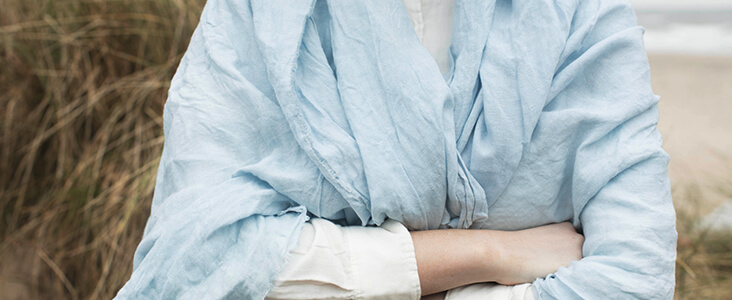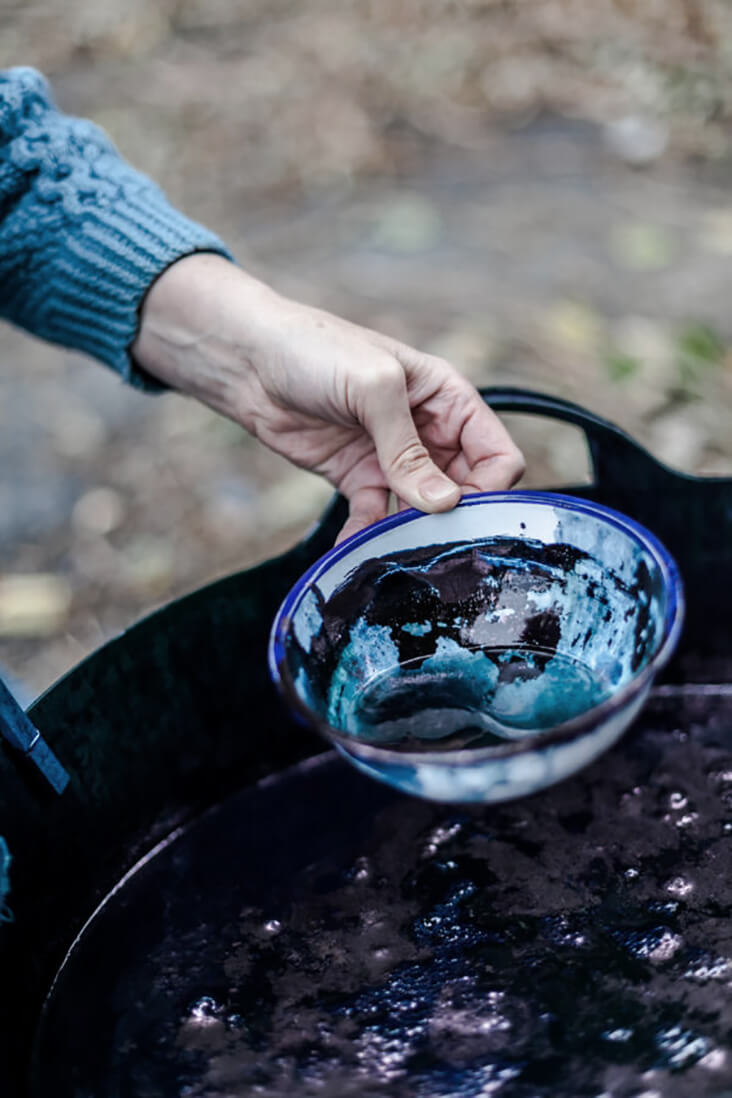Natural Dyeing: Indigo
When working with natural dyes there are four different types of dye. Adjective dyes, these need the help of a mordant to fix the dye to the fibre. Substantive dyes, these have high levels of tannic acid which act as a natural mordant, fixing the dye without the addition of a mordant. Fugitive dyes, as the name suggests, make a run for it and don’t have good fixing properties, examples of which are beetroot, turmeric or blackberries. They aren’t colourfast and will fade as well as change over time, even with the addition of a mordant. The last type is vat dyes, these are different to all the other types of dye and need a specific environment to make the dye molecules soluble in water, an example of which is Indigo. You don’t need a mordant when dyeing with Indigo as it fixes to the fibres.
Indigo is one of the oldest dyes, with a rich and vibrant past and it has been used as a dye for thousands of years. Evidence of Indigo dye has been found throughout Egypt, Isreal and Palestine, South America, Asia and Africa. With each region developing its own methods and traditions around this incredibly vibrant dye.
The most common form of Indigo dye comes from the leaves of the species Indigofera. These dye bearing plants contain the chemical compound Indican in their leaves. A vibrant, colourfast blue dye created by harvesting, fermenting and drying the leaves. The process of fermentation releases the indigo proper from its primary state of indican which results in a paste that is then dried and formed into blocks, balls or ground powder.
Once the Indigo has been fermented it is still insoluble in water and must be added to an alkaline solution in the form of an indigo vat. Once in the vat, the indigo must undergo reduction, a process of removing oxygen from the dye bath, making the dye soluble. The fabric is dipped into this solution then removed and hung so the oxidation can occur and in doing so the blue dye bods to the fibre. It is an incredible thing to behold the magic of indigo in person, watching the yellow-green liquid change before your eyes into the beautiful blue that has made Indigo so alluring for centuries.
There are many different types of indigo vats used today, some people use chemical reduction while others prefer the natural methods of reduction. The basic components of an indigo vat are indigo, a reducing agent and a base such as calcium hydroxide (slaked or hydrated lime).
When working with indigo your fabric or fibre still needs to be scoured in the same way as with other dyes, however, it does not need to be mordanted. The colour or depth of the shade is achieved by dipping your fabric in the vat, letting it oxidise and then re-dipping to achieve darker shades. Once the dipping is completed the fibre is then washed in a solution of vinegar to help neutralise the process and prevent rubbing or bleeding of any remaining dye.
Indigo is an incredible dye to work with, similar to creating a sourdough bread, it needs a particular environment, understanding and gentle coaxing to release its magic. It can be somewhat daunting and slightly intimidating but with some patience and a little know-how, you can access the world of a thousand blues with this ancient dye.
If you would like to learn how to make your own organic indigo vat, here is a step-by-step tutorial. Enjoy!
For best results, I would recommend using RFD (ready for dyeing) linens from fabrics-store selection (links below).































2 Comments
Cory King
You need a mordant to make the water alkaline. That is why we use mordants. The Mengui at Balboa park did an entire exhibit on indigo, it went into the science behind it but apparently they didn’t ask dyests what mordants are.
Janet Campbell
Thanks for the interesting article. One of my favorite stories is Gathering Blue by Lois Lowry. It’s fantasy – fiction, and it’s implied that the dye plant is indigo.